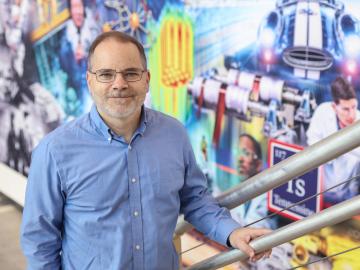
David Sholl has been named the executive director of the University of Tennessee-Oak Ridge Innovation Institute (UT-ORII) and vice provost of University of Tennessee, Knoxville, after serving as the institute’s interim leader since June 2023.

Jens Dilling has been named associate laboratory director for the Neutron Sciences Directorate at the Department of Energy’s Oak Ridge National Laboratory, effective April 1.

The Department of Energy’s Oak Ridge National Laboratory is providing national leadership in a new collaboration among five national laboratories to accelerate U.S. production of clean hydrogen fuel cells and electrolyzers.
The United States could triple its current bioeconomy by producing more than 1 billion tons per year of plant-based biomass for renewable fuels, while meeting projected demands for food, feed, fiber, conventional forest products and exports, according to the DOE’s latest Billion-Ton Report led by ORNL.

In partnership with the National Cancer Institute, researchers from ORNL and Louisiana State University developed a long-sequenced AI transformer capable of processing millions of pathology reports to provide experts researching cancer diagnoses and management with exponentially more accurate information on cancer reporting.

Researchers at ORNL are taking cleaner transportation to the skies by creating and evaluating new batteries for airborne electric vehicles that take off and land vertically.

Kate Evans, director for the Computational Sciences and Engineering Division at ORNL, has been awarded the 2024 Society for Industrial and Applied Mathematicians Activity Group on Mathematics of Planet Earth Prize.

Collaborative research that combined experiments at Yale University and molecular dynamics simulations at the Department of Energy’s Oak Ridge National Laboratory provides new insights into solving a major technical obstacle to efficient and sustainable industrial operations.

Anuj J. Kapadia, who heads the Advanced Computing Methods for Health Sciences Section at ORNL, has been elected as president of the Southeastern Chapter of the American Association of Physicists in Medicine.

Chuck Greenfield, former assistant director of the DIII-D National Fusion Program at General Atomics, has joined ORNL as ITER R&D Lead.

